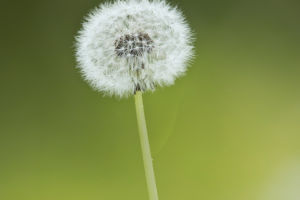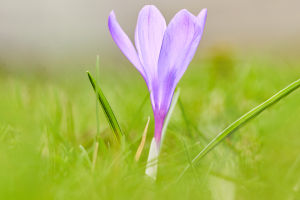Daffodils are one of the most cheerful and easy-to-grow flowers, bringing vibrant color and charm to gardens in early spring.
Known scientifically as Narcissus, these hardy perennials are famous for their trumpet-like blooms in shades of yellow, white, and even pink.
Daffodils are not only beautiful but also surprisingly low-maintenance, making them ideal for beginners and experienced gardeners alike. So, do daffodils grow easily? The answer is a resounding yes! With the right conditions and a bit of know-how, daffodils can flourish year after year. Here’s everything you need to know to grow these resilient flowers with ease.
Why Daffodils Are Easy to Grow
Daffodils are renowned for their hardiness and adaptability. These flowers grow from bulbs, which store energy and nutrients, allowing them to thrive in a variety of climates and soil types. They are resistant to pests and diseases, and animals like deer and rabbits tend to avoid them due to their mildly toxic nature. Daffodils also naturalize well, meaning they can spread and return year after year with minimal intervention. Their resilience and self-sufficiency make them one of the most dependable flowering plants for gardens.
Best Conditions for Growing Daffodils
While daffodils are easy to grow, they do have some basic requirements for optimal growth. Here are the main factors to keep in mind:
1. Sunlight: Daffodils prefer full sunlight, which means at least six hours of direct light daily. They can tolerate partial shade, but too much shade may result in fewer blooms. Planting them in sunny areas encourages vigorous growth and vibrant flowers.
2. Soil: These flowers are not fussy about soil but do best in well-draining soil. Heavy, clay-rich soil can retain too much moisture and may lead to root rot. To improve drainage, you can mix in some sand or compost before planting. A slightly acidic to neutral pH (6.0-7.0) is ideal.
3. Watering: Daffodils are relatively drought-tolerant, but they require moisture during the growing season. After planting, water them thoroughly, and continue to water during dry periods, especially in the spring when they are actively growing. However, avoid overwatering, as bulbs can rot in overly wet soil.
Planting Daffodils: Timing and Technique
The key to a successful daffodil display is proper planting. Here’s a step-by-step guide:
1.When to Plant: Plant daffodil bulbs in the fall, about 2-4 weeks before the first hard frost. This timing allows the bulbs to establish roots before winter. In most areas, this means planting in late September to November.
2. How to Plant: Dig a hole about three times the height of the bulb (usually 4-6 inches deep), with the pointed end facing up. If planting multiple bulbs, space them 3-6 inches apart to give them room to grow. Cover with soil, pat gently, and water thoroughly.
3. Grouping: For a more dramatic effect, plant daffodils in clusters or drifts rather than rows. This mimics their natural growth pattern and creates a lush, full display. Planting in groups of 10-20 bulbs results in a beautiful, concentrated burst of color.
Caring for Daffodils Throughout the Year
Daffodils are low-maintenance, but a bit of care can keep them looking their best year after year.
1. After Blooming: Once the flowers fade, remove spent blooms by cutting off the flower stems. This prevents the plant from using energy to produce seeds and instead redirects it to strengthening the bulb for next year’s growth.
2. Foliage Care: Allow the green foliage to die back naturally. Daffodil leaves are essential for photosynthesis, which replenishes the bulb’s nutrients. Avoid cutting or braiding the leaves, as this can hinder the plant’s ability to store energy.
3. Fertilizing: Daffodils generally don’t require much fertilizer, but adding a slow-release bulb fertilizer in the fall and early spring can support healthy growth. Avoid using high-nitrogen fertilizers, as these can cause excess leaf growth at the expense of blooms.
4. Dividing Bulbs: Over time, daffodils will multiply, creating crowded clumps that may result in fewer blooms. Every 3-5 years, consider dividing the bulbs. Wait until the foliage has withered in late spring, dig up the bulbs, separate them, and replant them in other areas or share them with friends!
Common Issues and Solutions
While daffodils are resilient, they can face some challenges:
• Poor Blooming: If your daffodils don’t bloom well, they may be too shaded or overcrowded. Ensure they receive enough sunlight and consider dividing the bulbs if they seem packed together.
• Bulb Rot: Overly wet soil can lead to bulb rot. Avoid planting in poorly draining soil, and water sparingly during dormancy.
• Yellowing Foliage: Some yellowing is natural, but if it occurs prematurely, it could be due to a lack of nutrients. Apply a balanced fertilizer in early spring if needed.
Daffodils are a perfect choice for gardeners of all levels, thanks to their hardy nature and stunning blooms. With just a little attention to sunlight, soil, and watering, these cheerful flowers will bring beauty to your garden year after year. Their ease of growth, minimal care needs, and natural resilience make daffodils a joy to cultivate and a true symbol of spring’s arrival. So, if you’re looking for an easy, rewarding plant, daffodils are a bright and beautiful choice. Plant them this fall, and enjoy their dazzling display for seasons to come!


